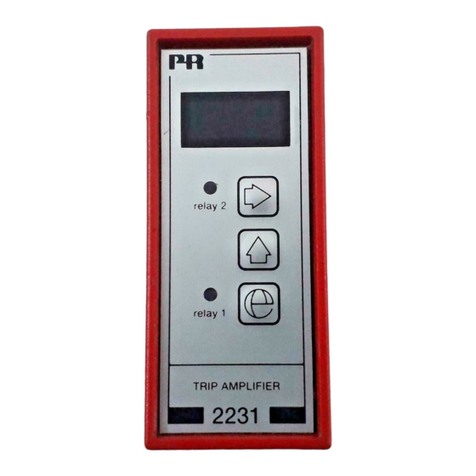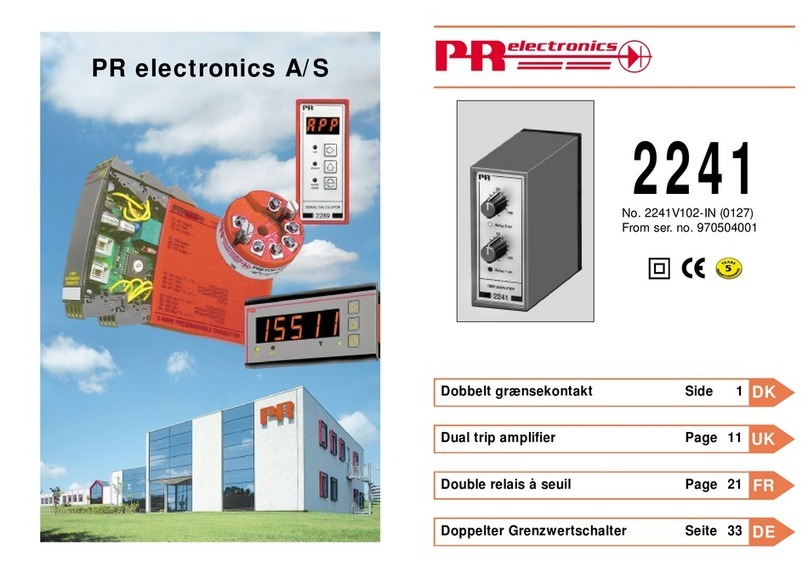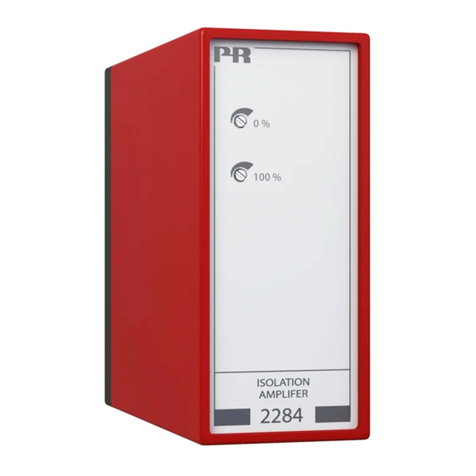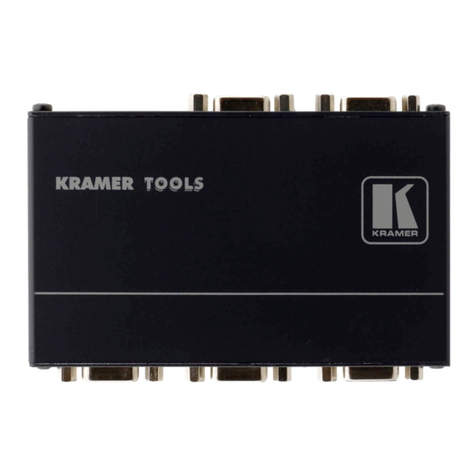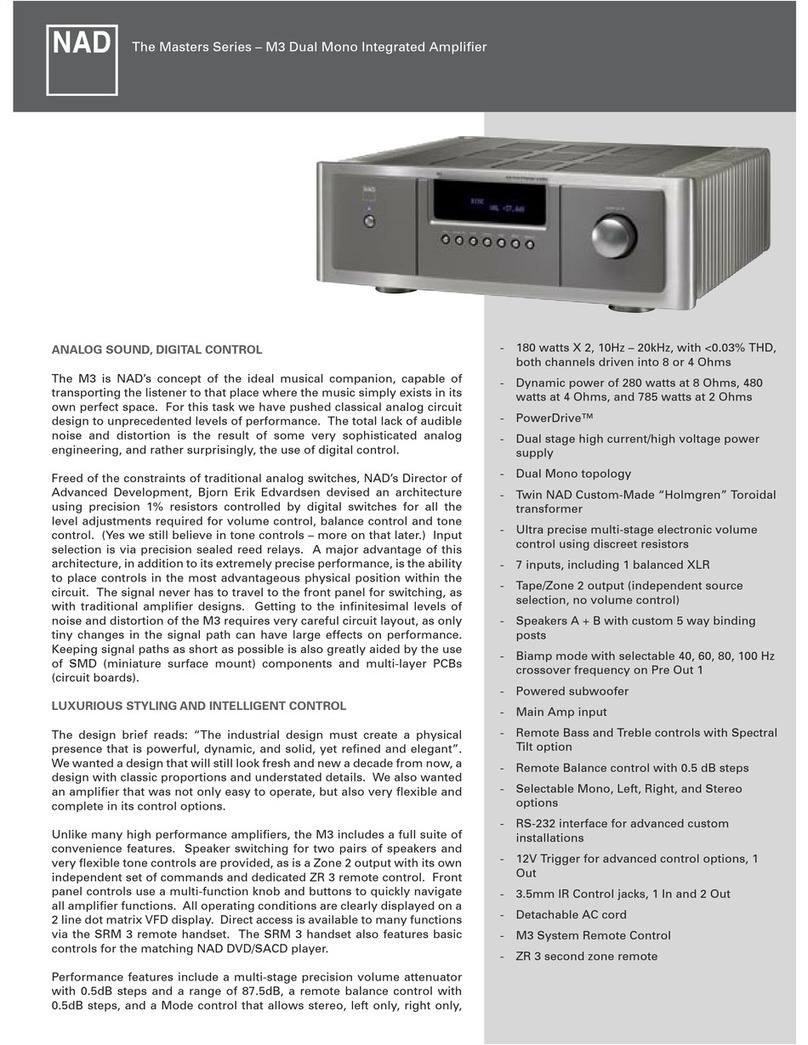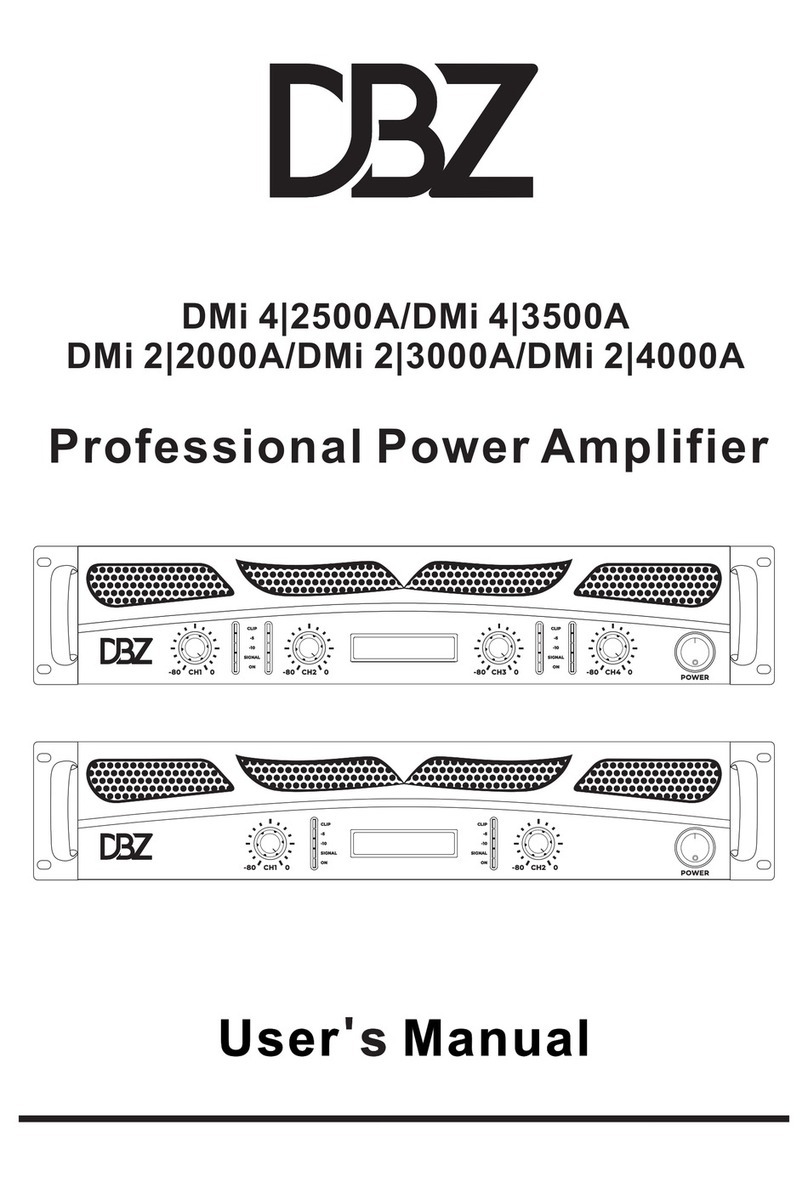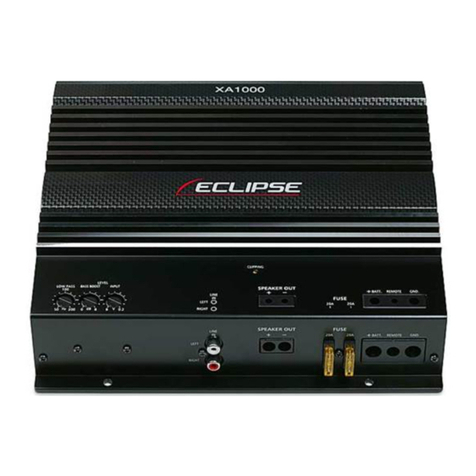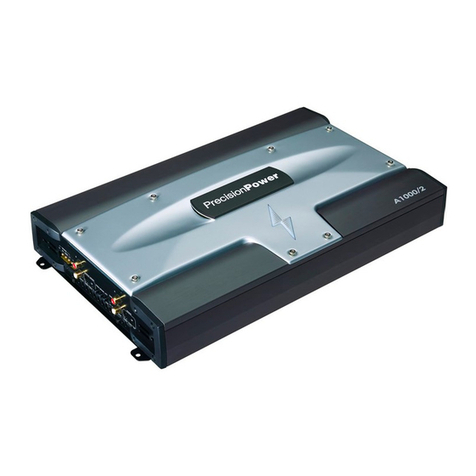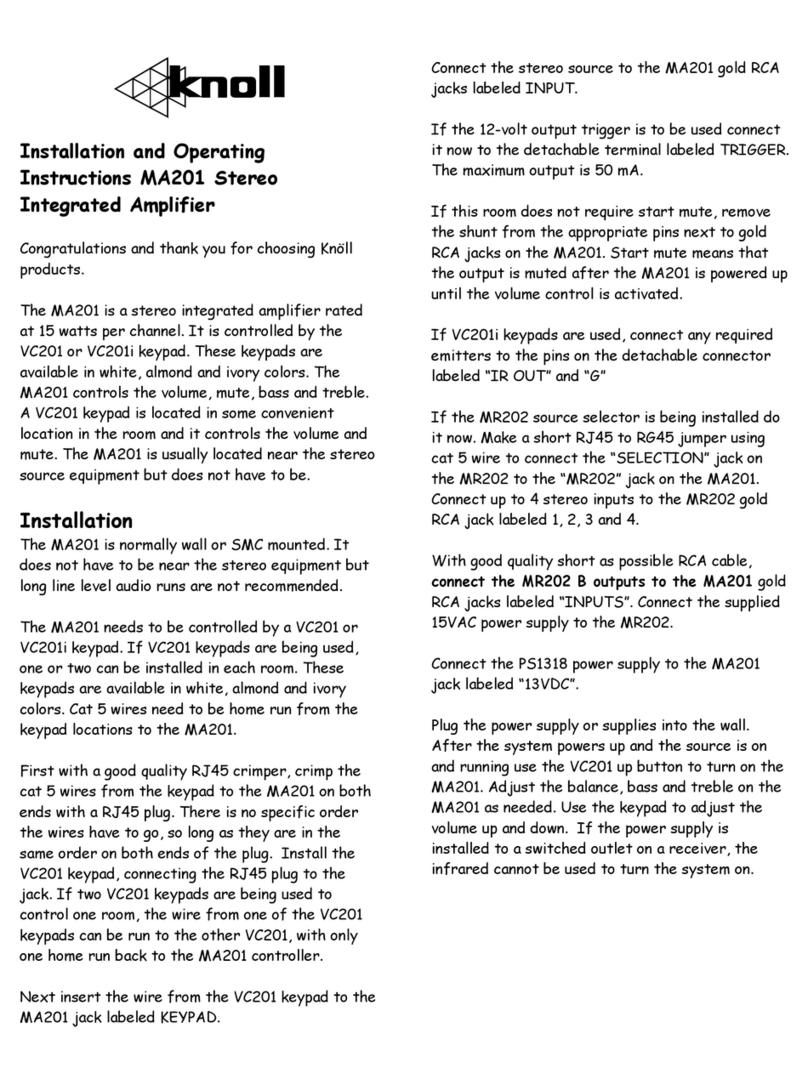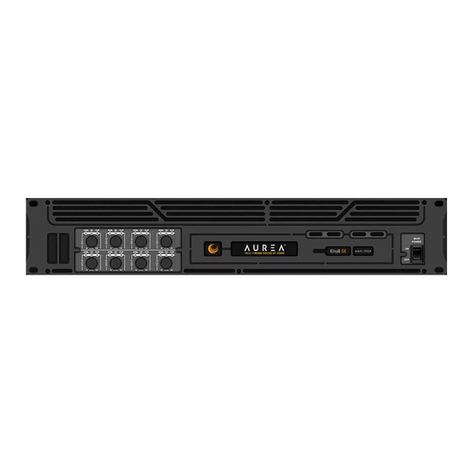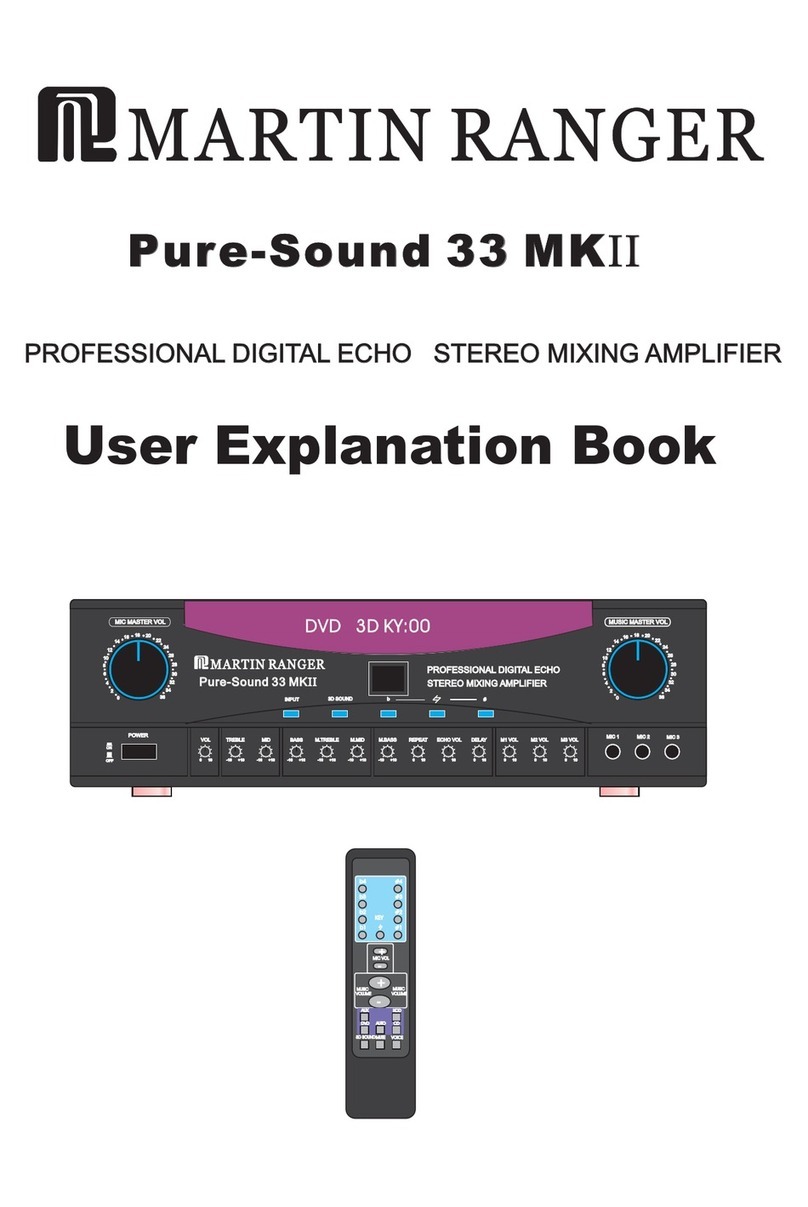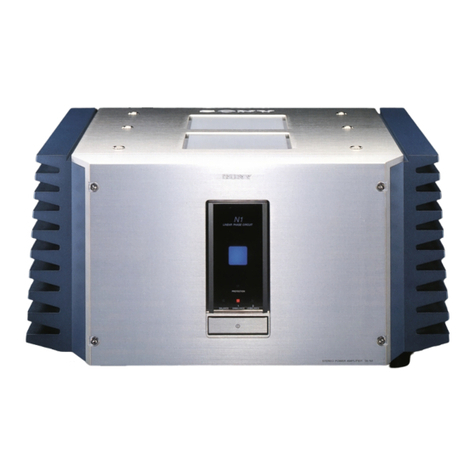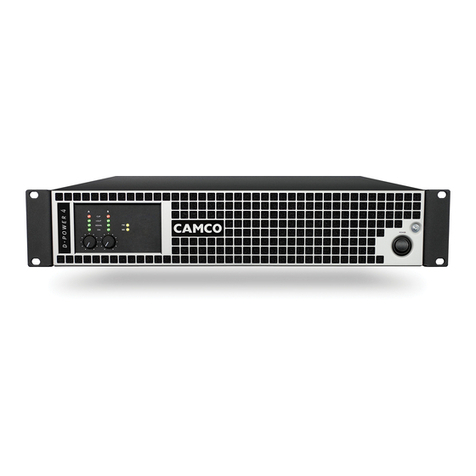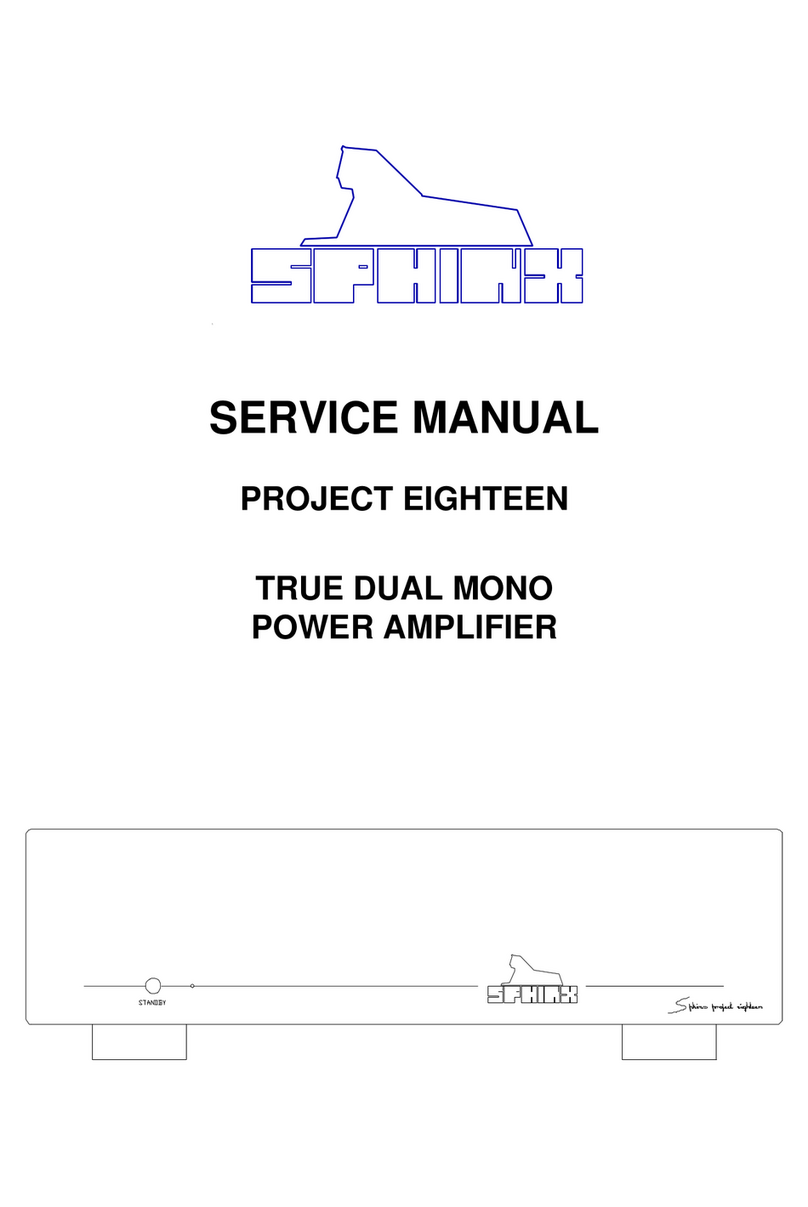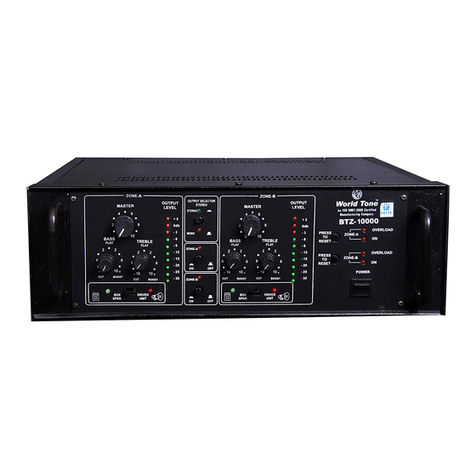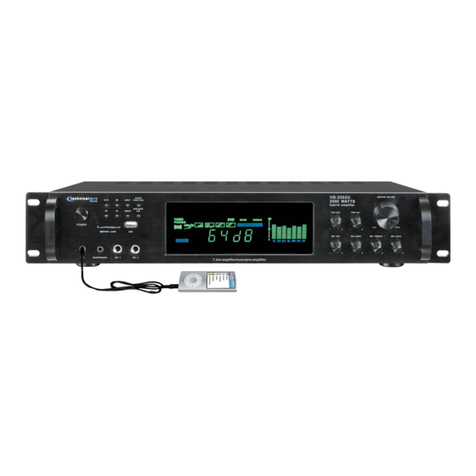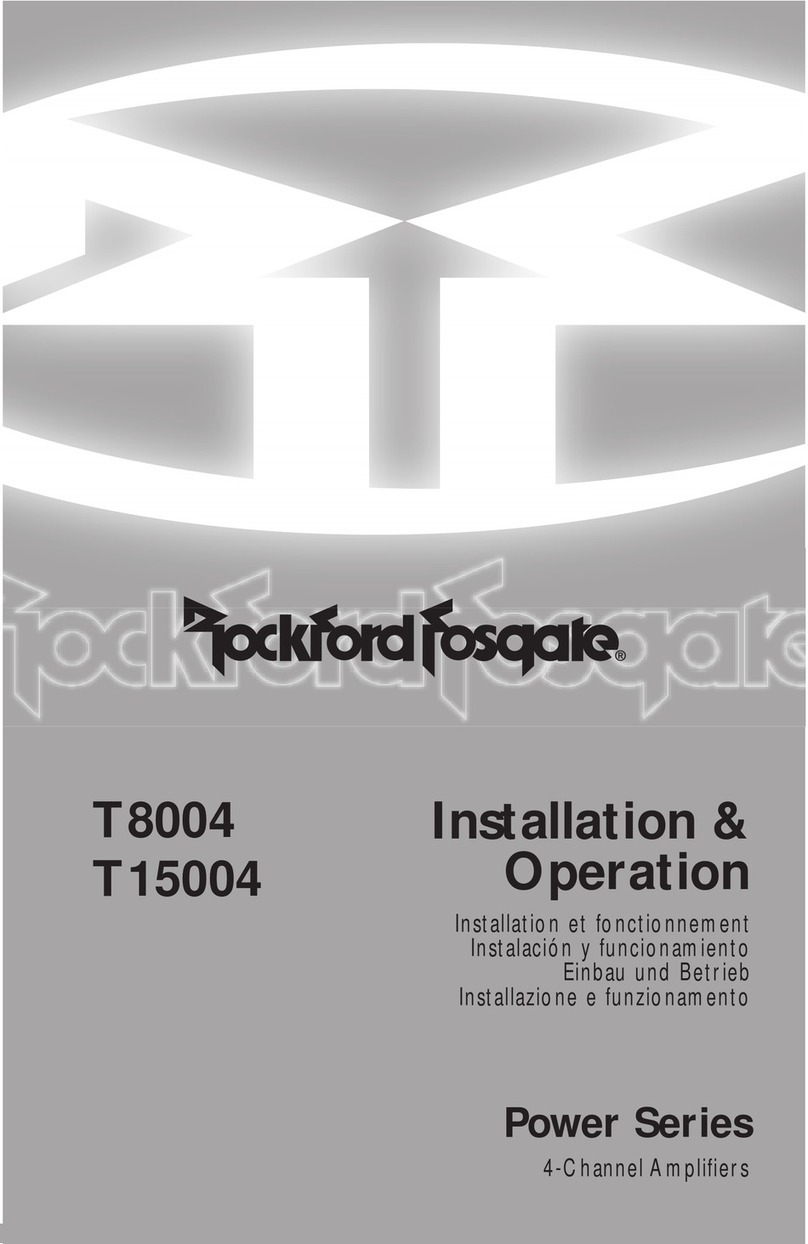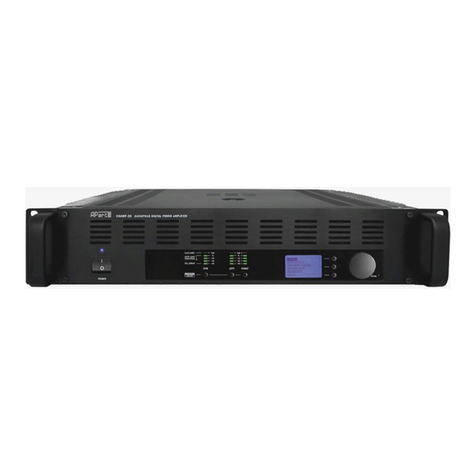PR electronics PReasy 4131 User manual

Programmable displays with a wide se-
lection of inputs and outputs for display of temperature,
volume and weight, etc. Feature linearisation, scaling,
and difference measurement functions for programming
via PReset software.
Displays
A wide selection of transmitters for DIN
form B mounting and DIN rail modules with analogue
and digital bus communication ranging from application-
specific to universal transmitters.
Temperature
Galvanic isolators for analogue and digital
signals as well as HART®signals. A wide product range
with both loop-powered and universal isolators featuring
linearisation, inversion, and scaling of output signals.
Isolation
Interfaces for analogue and digital
signals as well as HART®signals between sensors / I/P
converters / frequency signals and control systems in Ex
zone 0, 1 & 2 and for some modules in zone 20, 21 & 22.
Ex interfaces
PC or front programmable modules with
universal options for input, output and supply. This range
offers a number of advanced features such as process
calibration, linearisation and auto-diagnosis.
Universal
DK
UK
FR
DE
Side 1
Page 27
Page 53
Seite 79
SIGNALS THE BEST
4131
Universal
Trip Amplifier
No. 4131V102-IN (0903)
From ser. no. 060101001
RE200 SERIES MANUAL
MNX10035 REV 0
1/23/09

26 27
Grafisk afbildning af relæfunktionen setpunkt:
Grafisk afbildning af relæfunktionen vindue:
t
Off N.C.
On N.C. On N.C.
10
10
20
20
30
30
40
40
50
50
60
60
70
70
80
80
90
90
100
100
0
Off N.O. Off N.O.
On N.O.
t
10
10
20
20
30
30
40
40
50
50
60
60
70
70
80
80
90
90
100
100
0
Off N.O. Off N.O.On N.O.
Off N.C.On N.C. On N.C.
RelæenhederRelæenheder
Setpunkt = 50
Hysterese = 10
Hysterese = 10
Setpunkt = 50
Relæaktion: Stigende Relæaktion: Faldende
1
2
On On On
Off OffOff Off Off Off
On On On
1
2
t
10
10
20
20
30
30
40
40
50
50
60
60
70
70
80
80
90
90
100
100
0
t
10
10
20
20
30
30
40
40
50
50
60
60
70
70
80
80
90
90
100
100
0
222
2
1 1 11
Relæenheder
Øvre setpunkt = 60
Hysterese = 5
Hysterese = 5
Nedre setpunkt = 40
Relæfunktion: Vindue (vist for stigende signal)
Kontakt: Lukket inden for vindue =
Kontakt: Åben inden for vindue =
Relæenheder
Øvre setpunkt = 60
Hysterese = 5
Hysterese = 5
Nedre setpunkt = 40
Relæfunktion: Vindue (vist for faldende signal)
Kontakt: Lukket inden for vindue =
Kontakt: Åben inden for vindue =
UNIVERSAL TRIP AMPLIFIER
PReasy 4131
CONTENTS
Warnings ............................................................................ 28
Safety instructions.............................................................. 29
Declaration of Conformity .................................................. 31
How to dismantle SYSTEM 4000....................................... 32
Advanced features ............................................................. 33
Application ......................................................................... 33
Technical characteristics.................................................... 33
PR 4501 Display / programming front ............................... 34
Applications........................................................................ 35
Order codes ....................................................................... 36
Electrical specifications...................................................... 36
Visualisation in the 4501 of sensor error detection
and input signal outside range ...................................... 39
Sensor error detection limits.............................................. 40
Error indications ................................................................. 40
Connections ....................................................................... 41
Block diagram .................................................................... 42
Configuration / operating the function keys ...................... 43
Routing diagram................................................................. 46
Routing diagram, advanced settings (ADV.SET)................ 50
Scrolling help text in display line 3 .................................... 51
Graphic depiction of relay action Setpoint ........................... 52
Graphic depiction of relay action Window .......................... 52
27

28 29
SYMBOL IDENTIFICATION
Triangle with an exclamation mark: Warning / demand.
Potentially lethal situations.
The CE mark proves the compliance of the module with
the essential requirements of the directives.
The double insulation symbol shows that the module
is protected by double or reinforced insulation.
SAFETY INSTRUCTIONS
DEFINITIONS:
Hazardous voltages have been defined as the ranges: 75 to 1500 Volt DC, and
50 to 1000 Volt AC.
Technicians are qualified persons educated or trained to mount, operate, and
also troubleshoot technically correct and in accordance with safety regulations.
Operators, being familiar with the contents of this manual, adjust and operate
the knobs or potentiometers during normal operation.
RECEIPT AND UNPACKING:
Unpack the module without damaging it and make sure that the manual always
follows the module and is always available. The packing should always follow
the module until this has been permanently mounted.
Check at the receipt of the module whether the type corresponds to the one
ordered.
ENVIRONMENT:
Avoid direct sunlight, dust, high temperatures, mechanical vibrations and shock,
as well as rain and heavy moisture. If necessary, heating in excess of the stated
limits for ambient temperatures should be avoided by way of ventilation.
All modules fall under Installation Category II, Pollution Degree 1, and Insulation
Class II.
MOUNTING:
Only technicians who are familiar with the technical terms, warnings, and
instructions in the manual and who are able to follow these should connect the
module.
Should there be any doubt as to the correct handling of the module, please
contact your local distributor or, alternatively,
2928
WARNING!
This module is designed for connection to hazardous electric
voltages.
Ignoring this warning can result in severe personal injury or
mechanical damage.
To avoid the risk of electric shock and fire, the safety
instructions of this manual must be observed and the guidelines
followed. The specifications must not be exceeded, and the
module must only be applied as described in the following.
Prior to the commissioning of the module, this manual must be
examined carefully.
Only qualified personnel (technicians) should install this module.
If the equipment is used in a manner not specified by the
manufacturer, the protection provided by the equipment may be
impaired.
WARNING
To keep the safety distances, the relay contacts on the module
must not be connected to both hazardous and non-hazardous
voltages at the same time.
SYSTEM 4000 must be mounted on a DIN rail according to DIN
46277.
WARNING!
Until the module is fixed, do not connect hazardous voltages to
the module.
The following operations should only be carried out on a
disconnected module and under ESD safe conditions:
General mounting, connection and disconnection of wires.
Troubleshooting the module.
Repair of the module and replacement of circuit breakers
must be done by PR electronics A/S only.
HAZARD-
OUS
VOLTAGE
INSTAL-
LATION
GENERAL
WARNING
Do not open the front plate of the module as this will cause
damage to the connector for the display / programming front
PR 4501. This module contains no DIP-switches or jumpers.

30 31
DECLARATION OF CONFORMITY
As manufacturer
PR electronics A/S
Lerbakken 10
DK-8410 Rønde
hereby declares that the following product:
Type: 4131
Name: Universal trip amplifier
is in conformity with the following directives and standards:
The EMC Directive 2004/108/EC and later amendments
EN 61326-1
For specification of the acceptable EMC performance level, refer to the
electrical specifications for the module.
The Low Voltage Directive 2006/95/EC and later amendments
EN 61010-1
Rønde, 14 January 2009 Peter Rasmussen
Manufacturer’s signature
31
PR electronics A/S, Lerbakken 10, DK-8410 Rønde, Denmark,
tel: +45 86 37 26 77.
Mounting and connection of the module should comply with national legislation
for mounting of electric materials, i.a. wire cross section, protective fuse, and
location. Descriptions of input / output and supply connections are shown in the
block diagram and side label.
The following apply to fixed hazardous voltages-connected modules:
The max. size of the protective fuse is 10 A and, together with a power
switch, it should be easily accessible and close to the module. The
power switch should be marked with a label indicating that it will switch
off the voltage to the module.
Year of manufacture can be taken from the first two digits in the serial number.
UL INSTALLATION REQUIREMENTS:
Use 60/75°C copper conducters only
For use only in pollution degree 2 or better
Max. ambient temperature..................... 60°C
Max. wire size......................................... AWG 26-14
UL file number........................................ E231911
CALIBRATION AND ADJUSTMENT:
During calibration and adjustment, the measuring and connection of external
voltages must be carried out according to the specifications of this manual. The
technician must use tools and instruments that are safe to use.
NORMAL OPERATION:
Operators are only allowed to adjust and operate modules that are safely fixed
in panels, etc., thus avoiding the danger of personal injury and damage. This
means there is no electrical shock hazard, and the module is easily accessible.
CLEANING:
When disconnected, the module may be cleaned with a cloth moistened with
distilled water.
LIABILITY:
To the extent that the instructions in this manual are not strictly observed, the
customer cannot advance a demand against PR electronics A/S that would
otherwise exist according to the concluded sales agreement.
30

32 33
UNIVERSAL TRIP AMPLIFIER
PReasy 4131
• Input for RTD, TC, Ohm, potentiometer, mA and V
• 2 adjustable alarm limits
• FM-approved for installation in Div. 2
• 2 relay outputs
• Universal AC or DC supply
Advanced features:
• Programmable via detachable display front (4501), process calibration, relay
simulation, password protection, error diagnostics and selection of help text
in several languages.
Application:
• Process control with 2 pairs of potential-free relay contacts which can be
configured to suit any application.
• Trip amplifier with window fonction allowing the relay to change state within a
high and a low setpoint on the input span.
• Sophisticated sensor error surveillance, where one relay holds the state
immediately prior to the sensor error, thus allowing the process to continue.
The other relay can be set for sensor error alarm so that the defect sensor
can be replaced immediately.
Technical characteristics:
• When 4131 is used in combination with the 4501 display / programming front,
all operational parameters can be modified to suit any application. As the
4131 is designed with electronic hardware switches, it is not necessary to
open the module for setting of DIP-switches.
• A green front LED indicates normal operation and malfunction. A yellow LED
is ON for each active output relay.
• Continuous check of vital stored data for safety reasons.
• 3-port 2.3 kVAC galvanic isolation.
33
HOW TO DISMANTLE SYSTEM 4000
First, remember to demount the connectors with hazardous voltages.
Picture 1:
Detach the module from the DIN rail
by lifting the bottom lock.
32

34 35
PR 4501 DISPLAY / PROGRAMMING FRONT
Functionality.
The simple and easily understandable PReasy menu
structure and the explanatory help texts guide you
effortlessly and automatically through the configuration
steps, thus making the product very easy to use. Functions
and configuration options are described in the section
”Configuration / operating the function keys”.
Application:
• Communications interface for modification of operational parameters in 4131.
• Can be moved from one 4131 module to another and download the
configuration of the first transmitter to subsequent transmitters.
• Fixed display for readout of process data and status.
Technical characteristics:
• LCD display with 4 lines; Line 1 (H=5.57 mm) shows input signal, line 2
(H=3.33 mm) shows units, line 3 (H=3.33 mm) shows tag no. and line 4
shows communication and relay status.
• Programming access can be blocked by assigning a password. The password
is saved in the transmitter in order to ensure a high degree of protection
against unauthorised modifications to the configuration.
Mounting / installation:
• Click 4501 onto the front of 4131.
3534
Applications
Input signals:
Current
Volt-
age
Potenti-
ometer RTD and lin. R TC
Connect., wires
Output signals:
Supply:
21.6...253 VAC
or
19.2...300 VDC
33
32
31
+
-
+
-
44
43
42
41
Relays
24
23
22
21

36 37
Auxiliary supplies:
2-wire supply (terminal 44...43)................... 25...16 VDC / 0...20 mA
Max. wire size.............................................. 1 x 2.5 mm2stranded wire
Screw terminal torque................................. 0.5 Nm
Relative humidity......................................... < 95% RH (non-cond.)
Dimensions, without display front (HxBxD).. 109 x 23.5 x 104 mm
Dimensions, with display front (HxBxD)...... 109 x 23.5 x 116 mm
Protection degree........................................ IP20
Weight ......................................................... 170 g / 185 g with 4501
RTD, linear resistance and potentiometer input:
Input for RTD types:
Pt10, Pt20, Pt50, Pt100, Pt200, Pt250, Pt300, Pt400, Pt500, Pt1000
Ni50, Ni100, Ni120, Ni1000
Cable resistance per wire (max.), RTD........ 50 Ω
Sensor current, RTD.................................... Nom. 0.2 mA
37
Order codes:
4131 = Universal trip amplifier
4501 = Display / programming front
Electrical specifications:
Specifications range:
-20°C to +60°C
Common specifications:
Supply voltage, universal ............................ 21.6...253 VAC, 50...60 Hz
or 19.2...300 VDC
Max. consumption ...................................... ≤2.0 W
Fuse............................................................. 400 mA SB / 250 VAC
Isolation voltage, test / operation ............... 2.3 kVAC / 250 VAC
Communications interface .......................... Programming front 4501
Signal / noise ratio ...................................... Min. 60 dB (0...100 kHz)
Response time (0...90%, 100...10%):
Temperature input................................... ≤ 1 s
mA / V input............................................ ≤ 400 ms
Calibration temperature .............................. 20...28°C
Accuracy, the greater of the general and basic values:
36
EMC immunity influence ..................................... < ±0.5% of span
Extended EMC immunity:
NAMUR NE 21, A criterion, burst ....................... < ±1% of span
Basic values
Input
type Basic
accuracy Temperature
coefficient
mA ≤±4 µA ≤±0.4 µA / °C
Volt ≤±20 µV ≤±2 µV / °C
Pt100 ≤±0.2°C ≤±0.01°C / °C
Lin. R ≤±0.1 Ω≤±0.01 Ω/ °C
Potentiometer ≤±0.1 Ω≤±0.01 Ω/ °C
TC type:
E, J, K, L, N, T, U ≤±1°C ≤±0.05°C / °C
TC type: B, R, S,
W3, W5, LR ≤±2°C ≤±0.2°C / °C
General values
Input
type Absolute
accuracy Temperature
coefficient
All ≤±0.1% of span ≤±0.01% of span / °C Input
type Min.
value Max.
value Standard
Pt100
Ni100
Lin. R
Potentiometer
-200°C
-60°C
0Ω
10 Ω
+850°C
+250°C
10000 Ω
100 kΩ
IEC60751
DIN 43760
-
-

38 39
Relay outputs:
Relay functions............................................ Setpoint, Window, Sensor error,
Power and Off
Hysteresis, in % / display counts ............... 0,1...25% / 1...2999
On and Off delay......................................... 0...3600 s
Sensor error detection ................................ Break / Make / Hold
Max. voltage................................................ 250 VRMS
Max. current ................................................ 2 A / AC or 1 A / DC
Max. AC power ........................................... 500 VA
Ex / I.S. approval:
FM, applicable in......................................... Class I, Div. 2, Group A, B, C, D
Class I, Div. 2, Group IIC
Zone 2
Max. ambient temperature for T5 ............... 60°C
Marine approval:
Det Norske Veritas, Ships & Offshore ......... Standard for Certification No. 2.4
GOST R approval:
VNIIM, Cert. no............................................ See www.prelectronics.com
Observed authority requirements: Standard:
EMC 2004/108/EC ...................................... EN 61326-1
LVD 2006/95/EC.......................................... EN 61010-1
FM ............................................................... 3600, 3611, 3810 and ISA 82.02.01
UL, Standard for Safety .............................. UL 508
of span = of the currently selected measurement range
Visualisation in the 4501 of sensor error detection and
input signal outside range:
39
Effect of sensor cable resistance
(3- / 4-wire), RTD......................................... < 0.002 Ω/ Ω
Sensor error detection, RTD ....................... Yes
Short circuit detection, RTD........................ < 15 Ω
TC input:
Cold junction compensation (CJC)
via internally mounted sensor................. < ±1.0 °C
Sensor error detection, all TC types ........... Yes
Sensor error current:
when detecting ....................................... Nom. 2 µA
else.......................................................... 0 µA
Current input:
Measurement range .................................... -1...25 mA
Programmable measurement ranges.......... 0...20 and 4...20 mA
Input resistance........................................... Nom. 20 Ω+ PTC 50 Ω
Sensor error detection:
Loop break 4...20 mA ............................. Yes
Voltage input:
Measurement range .................................... -20 mV...12 VDC
Programmable measurement ranges.......... 0...1 / 0.2...1 / 0...5 / 1...5 /
0...10 and 2...10 VDC
Input resistance........................................... Nom. 10 MΩ
38
Type Min.
value Max.
value Standard
B
E
J
K
L
N
R
S
T
U
W3
W5
LR
+400°C
-100°C
-100°C
-180°C
-200°C
-180°C
-50°C
-50°C
-200°C
-200°C
0°C
0°C
-200°C
+1820°C
+1000°C
+1200°C
+1372°C
+900°C
+1300°C
+1760°C
+1760°C
+400°C
+600°C
+2300°C
+2300°C
+800°C
IEC 60584-1
IEC 60584-1
IEC 60584-1
IEC 60584-1
DIN 43710
IEC 60584-1
IEC 60584-1
IEC 60584-1
IEC 60584-1
DIN 43710
ASTM E988-90
ASTM E988-90
GOST 3044-84
Sensor error check:
Module: Configuration Sensor error detection:
4131
R1, ERR.ACT=NONE - R2, ERR.ACT=NONE,
OUT.ERR=NONE. OFF
Else: ON

40 41
CONNECTIONS
Inputs:
Output:
Supply:
31 32 33
Relays
21 22 24
23
R1 R2
RTD, 3- / 4-wire
41 42 44
43
RTD, 2-wire
42 44
43
41
Resistance, 2-wire
41 42 44
43
TC
41 42 44
43
+
-
Current
+
-
41 42 44
43
2-wire transmitter
+
-Tx
41 42 44
43
Resistance,
3- / 4-wire
41 42 44
43
Potentiometer
41 42 44
43
Voltage
+
-
41 42 44
43
Sensor error detection limits:
Error indications:
Outside range readout (IN.LO, IN.HI):
If the valid range of the A/D converter or the polynomial is exceeded
Input Range Readout Limit
VOLT
0...1 V / 0.2...1 V IN.LO < -25 mV
IN.HI > 1.2 V
0...10 V / 2...10 V IN.LO < -25 mV
IN.HI > 12 V
CURR 0...20 mA / 4...20 mA IN.LO < -1.05 mA
IN.HI > 25.05 mA
LIN.R
0...800 ΩIN.LO < 0 Ω
IN.HI > 1075 Ω
0...10 kΩIN.LO < 0 Ω
IN.HI < 110 kΩ
POTM - IN.LO < -0.5 %
IN.HI > 100.5 %
TEMP TC / RTD IN.LO < temperature range -2°C
IN.HI > temperature range +2°C
Sensor error detection (SE.BR, SE.SH):
Input Range Readout Limit
CURR Loop break (4..20 mA) SE.BR <= 3.6 mA; > = 21 mA
POTM All, SE.BR on all 3-wire SE.BR > ca. 126 kΩ
LIN.R 0...800 ΩSE.BR > ca. 875 Ω
0...10 kΩSE.BR > ca. 11 kΩ
TEMP
TC SE.BR > ca. 750 kΩ/ (1.25 V)
RTD, 2-, 3-, and 4-wire
No SE.SH for Pt10, Pt20 and Pt50
SE.BR > ca. 15 kΩ
SE.SH < ca. 15 Ω
Display readout below min.- / above max. (-1999, 9999):
Input Range Readout Limit
All All -1999 Display readout <-1999
9999 Display readout >9999
Readout at hardware error
Error search Readout Error cause
Test of internal CJC sensor CJ.ER CJC sensor defect or
temperature outside range
Checksum test of the configuration in FLASH FL.ER Error in FLASH
Communications test 4501 / 4131 NO.CO Connection error
Check that input signal matches input configuration IN.ER 1) Error levels on input
Check that saved configuration in 4501 matches module TY.ER Configuration is not 4131
! Error indications in the display flash once per second. The help text explains the error.
1) The error is reset by switching off and then switching on the supply voltage to the module.

42 43
CONFIGURATION /
OPERATING THE FUNCTION KEYS
Documentation for routing diagram.
In general:
When configuring the 4131, you will be guided through all parameters and you
can choose the settings which fit the application. For each menu there is a
scrolling help text which is automatically shown in line 3 on the display.
Configuration is carried out by using the 3 function keys:
will increase the numerical value or choose the next parameter
will decrease the numerical value or choose the previous parameter
will save the chosen value and proceed to the next menu
When configuration is completed, the dispaly will return to the default state 1.0.
Pressing and holding will return to the previous menu or return to the default
state (1.0) without saving the changed values or parameters.
If no key is activated for 1 minute, the display will return to the default state
(1.0) without saving the changed values or parameters.
Further explanations:
Fast setpoint adjustment and relay test: These menus allow you to make a
quick setpoint change and relay test when the FastSet menu is activated.
This function can only be activated when the relays are set for setpoint
function and are controlled by a setpoint.
Pressing and simultaneously will activate a relay test and change the
state of the relay.
Pressing will save the setpoint change.
Holding down for more than 1 second will return the unit to the default state
without saving the setpoint change.
Password protection: Programming access can be blocked by assigning a
password. The password is saved in the transmitter in order to ensure a high
degree of protection against unauthorised modifications to the configuration.
Default password 2008 allows acces to all configuration menus.
43
BLOCK DIAGRAM
42
24
23
22
21
CPU
CPU
EEPROM
A / D
33
31
PTC
CJC
0.2 mA
43
44
42
41
432
10 Ω
MUX
+
-
+
-
+
-
12
4 *4#
HIEJ
Potentiometer
2-wire transmitter
Voltage
Current
RTD and lin. R,
Connection,
wires
Supply
Supply
21.6...253 VAC or
19.2...300 VDC
TC
Relay 2
Relay 2
Relay 1
Relay 1
Green
Yellow
Yellow
4131

44 45
Signal and sensor error info via display front 4501
Sensor error (see limits in the table) is displayed as SE.BR (sensor break) or
SE.SH (sensor short). Signals outside the selected range (not sensor error,
see table for limits) are displayed as IN.LO indicating low input signal or
IN.HI indicating high input signal. The error indication is displayed in line 2
as text and at the same time the backlight flashes. Line 4 of the display is a
status line which displays status of relay 1 and relay 2, COM (flashing bullet)
indicating correct functioning of 4501 and arrow up/down which indicates
tendency readout of the input signal. If the figure 1 or figure 2 flashes, the
unit has detected that the setpoint has been exceeded and that the relay is in
“delay” mode. When the delay time has passed and the relay makes/breakes,
the relay sign is either shown or disappears.
Signal and sensor error indication without display front
Status of the unit can also be read from the green LED in the front of the module.
Green flashing LED 13 Hz indicates normal operation.
Green flashing LED 1 Hz indicates sensor error.
Steady green LED indicates internal error.
Relay functions
5 different relay function settings can be selected.
Setpoint: The unit works as a single trip amplifier
Window: The relay has a window that is defined by a low and a high
setpoint. On both sides of the window the relay has the
same status.
Error function: The relay is activated by sensor error.
Power: The relay is activated as long as the power is on.
Off: The relay is deactivated.
Increasing/decreasing: The relays can be set to activate at increasing or
decreasing input signal.
Delay: Both an ON and an OFF delay can be set on both relays in the range
0...3600 s.
Hysteresis: A hysteresis can be set at 0.1...25% of the span or between
1 and 2999 counts.
Advanced functions
The unit gives access to a number of advanced functions which can be reached
by answering “Yes” to the point “adv.set”.
Display setup: Here you can adjust the brightness contrast and the backlight.
Setup of TAG numbers with 6 alphanumerics. Line 3 of the display shows
TAG number.
Two-point process calibration: The unit can be process-calibrated in 2 points
to fit a given input signal . A low input signal (not necessarily 0%) is applied
and the actual value is entered. Then a high signal (not necessarily 100%) is
applied and the actual value is entered. If you accept to use the calibration,
the unit will work according to this new adjustment. If you later reject this
menu point or choose another type of input signal the unit will return to
factory calibration.
Process simulation function: If you say ”yes” to the point “EN.SIM” it is
possible to simulate an input signal by means of the arrow keys and thus test
the function of the relays. When you finalise the point with , the unit returns
to normal mode. The point REL.SIM allows you to activate relay 1 and relay 2
by means of the arrow-keys up/down. You must exit the menu by pressing
(no time-out).
Password: Here you can choose a password between 0000 and 9999 in order
to protect the unit against unauthorised modifications to the configuration.
You can also choose whether the menu ”fast setpoint adjustment” of the
relays shall be accessible regardsless of password protection. The unit
is delivered default without password. If you have locked the unit with a
password by mistake, you can always open the menu by using the master
password 2008.
Language: In the menu ”lang.setup” you can choose between 7 different
language versions of help texts that will appear in the menu. You can choose
between UK, DE, FR, IT, ES, SE and DK.
Auto diagnosis
The unit performs an advanced auto diagnosis of the internal circuits.
The following possible errors can be displayed in the front unit 4501.
CJ.ER - CJC sensor defect or CJC temperature outside range
FL.ER - Flash error
NO.CO - Connection error
IN.ER - Error levels on input
TY.ER - Configuration in 4501 does not match this product type
Selection of units
After choosing the input signal type you can choose the process units which
will be shown in text line 2 (see table). By selection of temperature input the
process value is always displayed in Celsius or Fahrenheit. This is selected in
the menu point after selection of temperature input.

Power up
. 115
2SP
4 *4#
,-
!41#2
2SP
,-
7#1
4-*2
',27.#
2SP
4-*2
"3
*',
.-2+
2#+.
#* 7
2SP]
]
#* 7
2SP]
4 ,%#
2SP
"3
',27.#
2SP
' ,%#
2SP
*',
',27.#
2SP
5
"-,,#"
2SP
5
5
5
.-2+
',27.#
2SP
2#+.
',27.#
2SP
2SP]
2SP
.P
1#,1-
2SP
.P
,'
2"
7#1
!41#2
2SP
,E
1#,1-
2SP
2"
1#,1-
2SP
.P27.#
2SP
5
"-,,#"
2SP
5
5
5
,E27.#
2SP]
5
"-,,#"
2SP
5
5
5
2")
2"27.#
2SP
2"Z2"#2"(2")
2"*2",2" 2"1
2"22"32"52"5
2"*N
!'1.*-
2SP
!#".
2SP
3,'2
2SP
j"
I
NLI
QJEPO
!'1.&'
2SP
!'1.
#*3,
2SP
!'1.
.# "
,-
"-,2
2SP
,-
,"
1#2.
2SP
',"
"2!'
2SP
',"
!#"
&712
2SP
1#2.
$3,"
2SP
1#2.
5',!
#
.-5
-$$
-'5
"-,2
2SP]
-'5
"'5
1#2.*-
2SP
]
1#2.&'
2SP
&712
2SP
5',!
$3,"
2SP
-.#,
# "2
2SP
"*-1
-.#,
#
$3,"
2SP
.-5
$3,"
2SP
-$$
$3,"
2SP
1.2
1.1
1.3
1.0
j"
3,'2
2SP
j"
j$
j"
j$
>=N
?I
BP
BPD
BPIEJ
BPO
C
C=HD
C=HIEJ
%5
DL
D.=
&U
EJ
EJD
EJIEJ
EJO
ELO
)
G
GC
G(
G.=
G4
G5
G5D
H
HD
HIEJ
HO
I
ID
IIEJ
IO
IO
I
ID
IIEJ
I
I>=N
IEHO
IEJ
II
IIO
IKH
+.=
I4
+5
+5D
,
-DI
.=
L&
NLI
O
1
P
PD
Q
QI
Q1
4
5
5D
T@
46 474746
Fast setpoint adjustment
and relay test
Increase setpoint
Decrease setpoint
Save and exit the menu
and simultaneously = change relay state
Continued on the next page
ROUTING DIAGRAM
If no key is activated for 1 minute, the display will return to the default
state 1.0 without saving configuration changes.
Increase value / choose next parameter
Decrease value / choose previous parameter
Save the chosen value and proceed to the next menu
Hold Back to previous menu / return to menu 1.0 without saving
Continued on the page
Routing diagram ADV.SET
1.0 = Default state
Line 1 shows input
signal.
Line 2 shows
3,'2
Line 3 shows 2 %
Line 4 shows relay
and communica-
tion status.
1.1 = Only if password-
protected.
1.2 = Only if FastSet is
activated and the
relay function is
setpoint.
1.3 = Not valid for these
input signals:
0...20 mA and
voltage.
Selectable3,'21

-,!#*
2SP
,-,#
# "2
2SP
&-*!
"*-1
-.#,
,-,#
-$$!#*
2SP
-,!#*
2SP
,-,#
# "2
2SP
&-*!
"*-1
-.#,
,-,#
-$$!#*
2SP
,-
"-,2
2SP
,-
,"
1#2.
2SP
',"
"2!'
2SP
',"
!#"
&712
2SP
-,!#*
2SP
,-,#
# "2
2SP
&-*!
"*-1
-.#,
,-,#
1#2.
$3,"
2SP
1#2.
5',!
#
.-5
-$$
-$$!#*
2SP
-'5
"-,2
2SP]
-'5
"'5
1#2.*-
2SP
]
1#2.&'
2SP
&712
2SP
-,!#*
2SP
,-,#
# "2
2SP
&-*!
"*-1
-.#,
,-,#
5',!
$3,"
2SP
-$$!#*
2SP
-.#,
# "2
2SP
"*-1
-.#,
#
$3,"
2SP
.-5
$3,"
2SP
-$$
$3,"
2SP
1.3
1.3
1.3
1.3
1.3
48 49
To default state 1.0

1 4#
+#+- 7
2SP
1 4#
*- !
+#+
1#23.
2SP
+#+
!'1.
" *
1'+
. 11
* ,%
!'1.
1#23.
2SP
"-,2
2SP
*'%&2
2SP
4 *4#
2SP]
" *
1#23.
2SP
7#1
" **-
2SP
7#1
,-
2SP
,-
7#1
" *&'
2SP
7#1
,-
2SP
,-
7#1
31#" *
2SP
7#1
,-
1'+
1#23.
2SP
7#1
#,1'+
2SP
7#1
,-
2SP
,-
#*1'+
2SP
* ,%
1#23.
2SP
3)
* ,%3
2SP
!#!)
#1$
'21#
3)
. 11
1#23.
2SP
7#1
#,. 11
2SP
7#1
,-
,#5. 1
2SP
7#1
#,$ 12
2SP
7#1
,-
2.0
,-
50 51
ROUTING DIAGRAM
Advanced settings (ADV.SET)
To default state 1.0
[01]
[02]
[03]
[04]
[05]
[06]
[07]
[08]
[09]
[10]
[11]
[12]
[13]
[14]
[15]
[16]
[17]
[18]
[19]
[20]
[21]
[22]
[23]
[24]
[25]
[26]
[27]
[28]
[29]
[30]
[31]
[32]
[33]
[34]
[43]
[44]
[45]
[46]
[47]
[49]
[50]
[51]
[52]
[53]
[54]
[55]
[56]
[57]
[58]
[59]
[60]
[61]
[62]
Set correct password
Enter advanced setup menu?
Select temperature input
Select potentiometer input
Select linear resistance input
Select current input
Select voltage input
Select 0.0-1 V input range
Select 0.2-1 V input range
Select 0-5 V input range
Select 1-5 V input range
Select 0-10 V input range
Select 2-10 V input range
Select 0-20 mA input range
Select 4-20 mA input range
Select 2-wire sensor connection
Select 3-wire sensor connection
Select 4-wire sensor connection
Set resistance value low
Set resistance value high
Select Celsius as temperature unit
Select Fahrenheit as temperature unit
Select TC sensor type
Select Ni sensor type
Select Pt sensor type
Select display unit
Select decimal point position
Set display range low
Set display range high
Set relays in % of input range
Set relays in display units
Select Pt10 as sensor type
Select Pt20 as sensor type
Select Pt50 as sensor type
Select Pt100 as sensor type
Select Pt200 as sensor type
Select Pt250 as sensor type
Select Pt300 as sensor type
Select Pt400 as sensor type
Select Pt500 as sensor type
Select Pt1000 as sensor type
Select Ni50 as sensor type
Select Ni100 as sensor type
Select Ni120 as sensor type
Select Ni1000 as sensor type
Select TC-B as sensor type
Select TC-E as sensor type
Select TC-J as sensor type
Select TC-K as sensor type
Select TC-L as sensor type
Select TC-N as sensor type
Select TC-R as sensor type
Select TC-S as sensor type
Select TC-T as sensor type
Select TC-U as sensor type
Select TC-W3 as sensor type
Select TC-W5 as sensor type
Select TC-Lr as sensor type
Select OFF function - relay is permanently off
Select POWER function - relay indicates power status OK
Select ERROR function - relay indicates sensor error only
Select WINDOW function - relay controlled by 2 setpoints
Select SETPOINT function - relay controlled by 1 setpoint
Select Normally Closed contact
Select Normally Open contact
Set relay setpoint
Activate relay on decreasing signal
Activate relay on increasing signal
SCROLLING HELP TEXT IN DISPLAY LINE 3
Set relay hysteresis
No error action - undefined status at error
Open relay contact at error
Close relay contact at error
Hold relay status at error
Set relay ON delay in seconds
Set relay OFF delay in seconds
Relay contact is Closed Inside Window
Relay contact is Open Inside Window
Set relay window setpoint high
Set relay window setpoint low
Set relay window hysteresis
No error action - undefined status at error
Open relay contact at error
Close relay contact at error
Hold relay status at error
Set relay ON delay in seconds
Set relay OFF delay in seconds
Open relay contact at error
Close relay contact at error
Enter password setup
Enter simulation mode
Perform process calibration
Enter display setup
Perform memory operations
Load saved configuration into 4131
Save 4131 configuration in 4501
Adjust LCD contrast
Adjust LCD backlight
Write a 6-character device TAG
Calibrate input low to process value?
Calibrate input high to process value?
Enable simulation mode?
Set the input simulation value
Relay simulation - use and to toggle relay 1
and 2
Enable password protection?
Set new password
Enable Fastset functionality?
Relay setpoint - press to save
Relay setpoint - Read only
Select language
Use process calibration values?
Set value for low calibration point
Set value for high calibration point
2.0 In the submenu simulation (SIM) you must
press to return to the default state 1.0.

52 53
Graphic depiction of relay action Setpoint:
Graphic depiction of relay action Window:
t
Off N.C.
On N.C. On N.C.
10
10
20
20
30
30
40
40
50
50
60
60
70
70
80
80
90
90
100
100
0
Off N.O. Off N.O.
On N.O.
t
10
10
20
20
30
30
40
40
50
50
60
60
70
70
80
80
90
90
100
100
0
Off N.O. Off N.O.On N.O.
Off N.C.On N.C. On N.C.
Relay unitsRelay units
Setpoint = 50
Hysteresis = 10
Hysteresis = 10
Setpoint = 50
Relay action: Increasing Relay action: Decreasing
1
2
On On On
Off OffOff Off Off Off
On On On
1
2
t
10
10
20
20
30
30
40
40
50
50
60
60
70
70
80
80
90
90
100
100
0
t
10
10
20
20
30
30
40
40
50
50
60
60
70
70
80
80
90
90
100
100
0
222
2
1 1 11
Relay units
Setpoint High = 60
Hysteresis = 5
Hysteresis = 5
Setpoint Low = 40
Relay function: Window (shown for increasing signal)
Contact: Closed inside window =
Contact: Open inside window =
Relay units
Setpoint High = 60
Hysteresis = 5
Hysteresis = 5
Setpoint Low = 40
Relay function: Window (shown for decreasing signal)
Contact: Closed inside window =
Contact: Open inside window =
RELAIS A SEUILS UNIVERSEL
PReasy 4131
SOMMAIRE
Avertissements................................................................... 54
Consignes de sécurité ....................................................... 55
Déclaration de conformité.................................................. 57
Démontage du SYSTEME 4000......................................... 58
Options avancées .............................................................. 59
Applications........................................................................ 59
Caractéristiques techniques .............................................. 59
PR 4501 Indicateur / façade de programmation ............... 60
Applications........................................................................ 61
Références de commande................................................. 62
Spécifications électriques .................................................. 62
Indication dans le 4501 de la détection erreur capteur
et du signal d’entrée hors d’échelle............................... 65
Limites de la détection erreur capteur............................... 66
Indications erreur matériel.................................................. 66
Connexions ........................................................................ 67
Schéma de principe ........................................................... 68
Configuration / utilisation des touches de fonction........... 69
Diagramme de programmation .......................................... 72
Diagramme de programmation,
réglage avancé (ADV.SET).............................................. 76
Menu déroulant en ligne 3 de l’indicateur ......................... 77
Illustration graphique de l’action de relais consigne ......... 78
Illustration graphique de l’action de relais fenêtre............. 78
53
Other manuals for PReasy 4131
2
Table of contents
Other PR electronics Amplifier manuals
